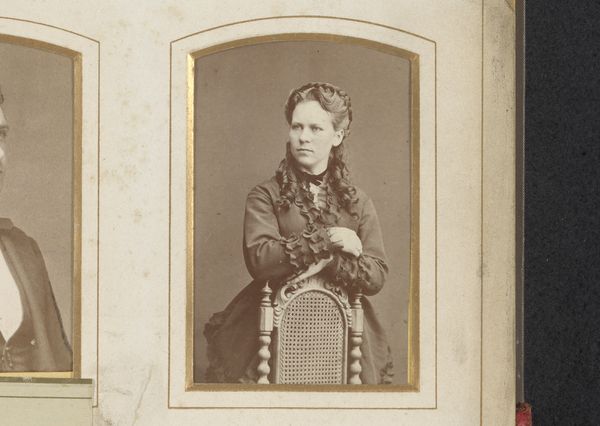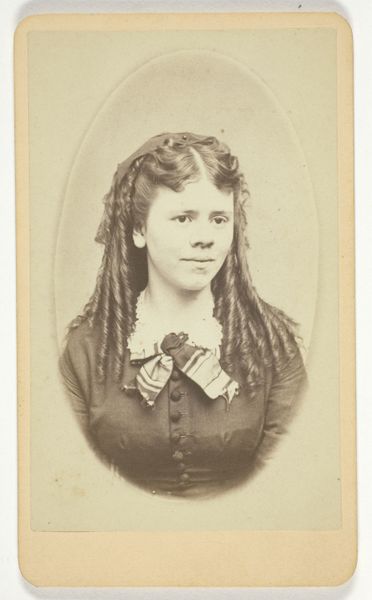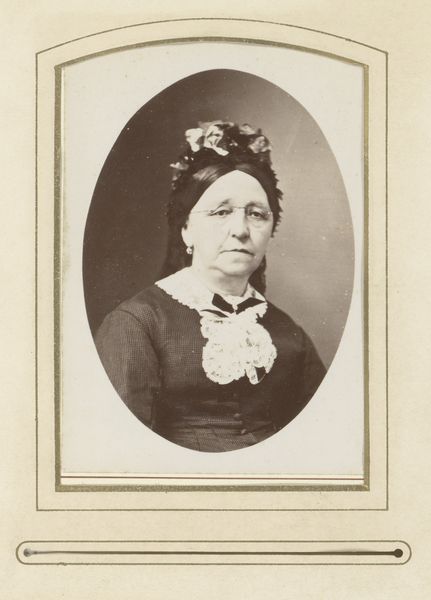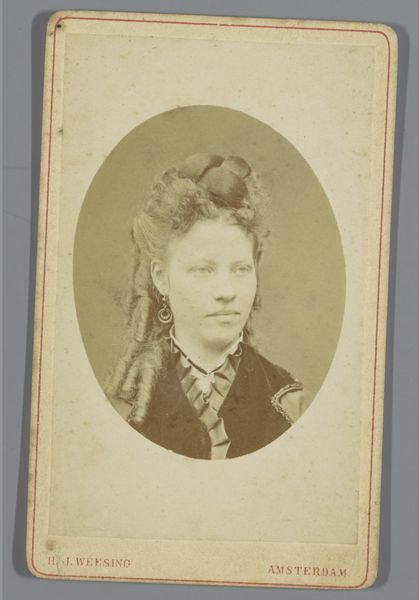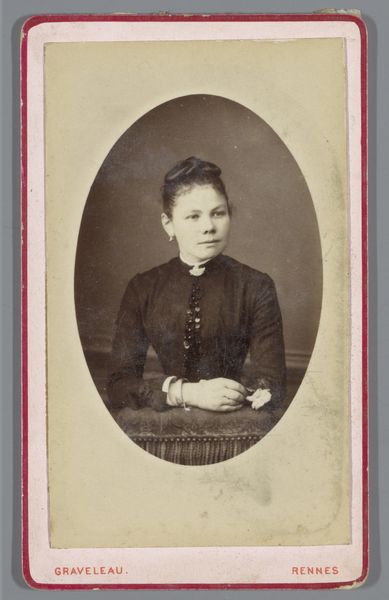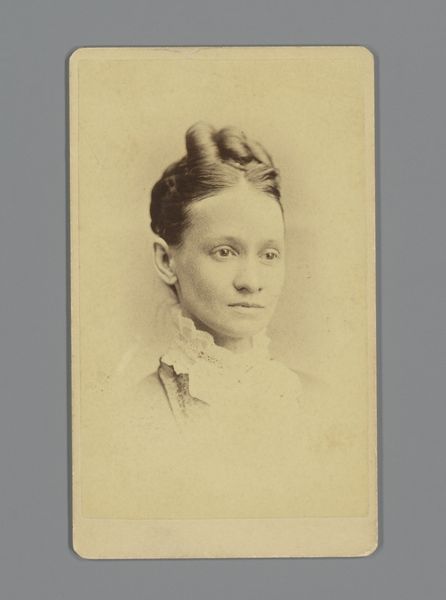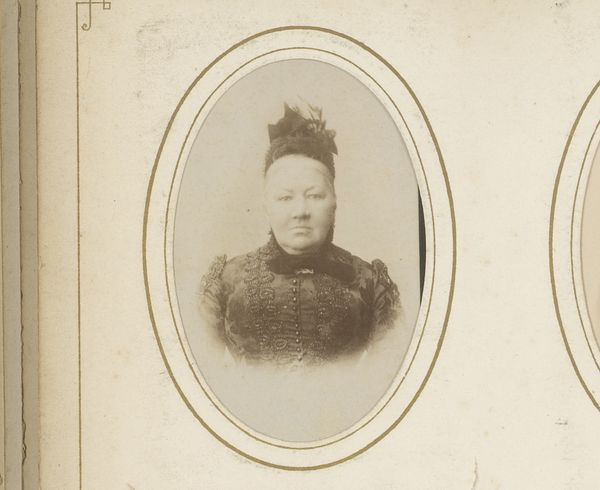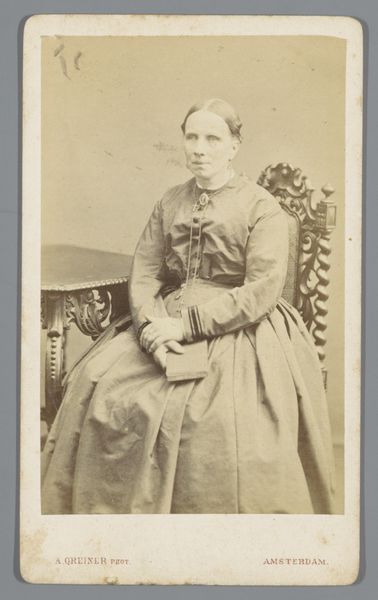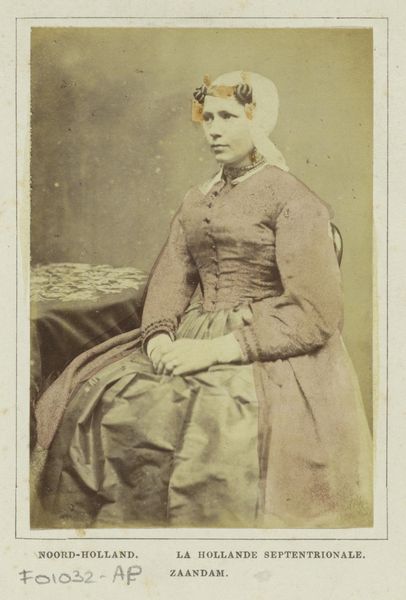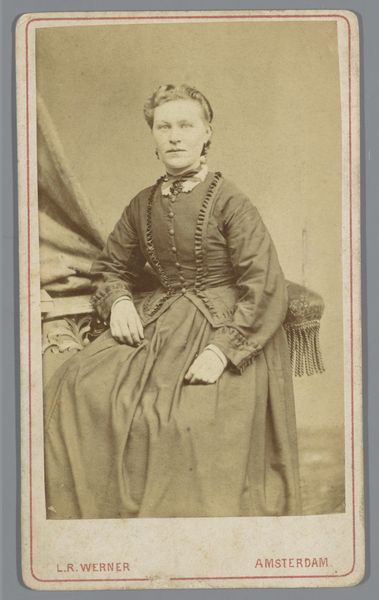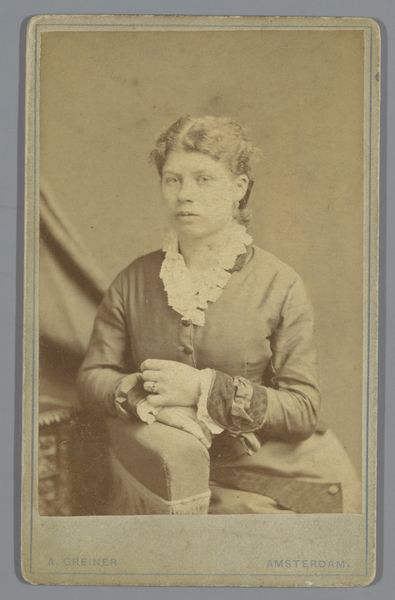
Portret van een leunende vrouw met een opgestoken vlecht c. 1866 - 1900
0:00
0:00
Dimensions: height 91 mm, width 54 mm, height 103 mm, width 64 mm
Copyright: Rijks Museum: Open Domain
Curator: Before us is "Portret van een leunende vrouw met een opgestoken vlecht," or "Portrait of a Leaning Woman with an Updo Braid" by Johan Christiaan Reesinck, likely a gelatin silver print dating between 1866 and 1900. Editor: Immediately, the detail in the textiles grabs me—that shimmering jacket and the tasseled cushion seem almost tactile despite the sepia tones. It's an intimate capture. Curator: It's fascinating how portraiture evolved with photography. In paintings, a seated pose with crossed arms can signify melancholy or introspection. Does that hold true here? The photographic medium introduces a fascinating layer to understanding representation, wouldn't you say? Editor: Absolutely. But I'm curious about the practicalities: the time it took to pose, the development process. The materials of her dress, clearly quite luxurious with the shimmering fabric and visible seems and tailoring - who was creating these objects? Where did they come from? It grounds the subject in a tangible reality for me. The whole portrait is presented within the limitations of its material processes. Curator: You raise such important considerations. Think about how specific hairstyles carried messages about a woman’s marital status, or religious views within certain social circles. It makes me wonder if the woman here intended to convey anything specific with her distinctive braid and its placement on her head. Editor: And the studio environment itself. This isn’t an aristocratic painting; it speaks to the democratizing effect of photography, yet the accoutrements—the fabric, the chair—were clearly meant to emulate high-society portraiture and ideals. Curator: Reesinck gives us an interesting peek at how accessible such cultural symbols are to those outside elite circles. We might look closer and understand how the symbols relate to our current beliefs. What does it tell us about shifting trends? Editor: Perhaps, looking at her direct gaze, a collaboration across the photographic lens, revealing not just surface details but hinting at societal tensions and individual aspirations of that time. I appreciate this piece now. Curator: The picture does not just capture this unknown sitter’s outer image; it opens a gateway to examining cultural symbols in a new context.
Comments
No comments
Be the first to comment and join the conversation on the ultimate creative platform.
